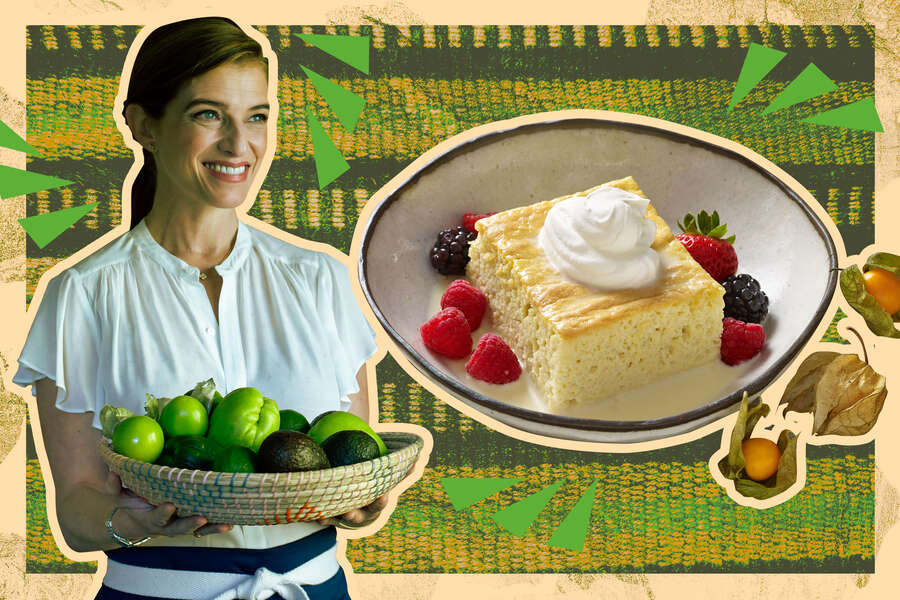
Chef Pati Jinich remembers growing up in Mexico City and, when it was time to celebrate, she and her family headed straight to Macram, a regional chain that specialized in one thing. “This was a tres leches bakery,” she remembers. “You would go there for a birthday cake or for Sunday comida. Bringing the cake back home was a big event.”
Jinich has since perfected the traditional tres leches cake recipe and many adaptations, having to make it out of necessity when she first came to the U.S. more than two decades ago. “When I first moved here, you couldn’t find tres leches cake for the life of you—even in Texas,” she says. “So I would make my own for my three boys. It’s something you can eat throughout the week and it just gets better and better.”
The dessert is traditionally made with a sponge cake soaked in three different kinds of milk—evaporated, condensed, and heavy cream—and can be topped with berries, heavy whipping cream, or confectioners’ sugar. But, as Jinich explains, the cake and its heritage is all up to interpretation.
“Tres leches connects all of the Latin American countries, we feel that it belongs to all of us,” she says. “Mexicans will say it’s ours, Ecuadorians will say the same. Every country calls it their own, so the dessert can be a great building bridge between cultures.”
As for its Mexican origins, Jinich connects the cake’s vanilla extract to its native region of Veracruz. She also says tres leches can serve as a history lesson—a link to Spanish and Portuguese colonialism.
“We owe many Mexican sweets to Spanish nuns that were baking in the convents,” she says. “Without milk or wheat flour, you couldn't have a traditional tres leches cake and those did not exist here before the Spanish arrived.”
For her part, Jinich has made many versions over the years, starting with a classic version, then experimenting with a chocolate marble adaptation. In her upcoming cookbook, Treasures of the Mexican Table, she branches out to a quatro leches version with cajeta, apricot, and plums.
But, she says, no matter what version you make, there are some universal tips to keep in mind. While some people might use meringue or frosting as the topper, she always goes with heavy whipping cream because it’s the “lightest and freshest.” She also preaches patience.
“The only thing that goes wrong is that you freak out,” she says with a laugh. “When you pour the tres leches sauce into the cake, it doesn’t all get absorbed at once. It takes time to soak the sauce. It’s like a tiramisu, it needs time to become something else after the soaking.”
Jinich also advises to put your perfectionism aside while making the recipe.
“I would suggest, if it breaks a little, just sauce the cake and cover it up with whipped cream,” she says. “It won’t look pretty until you dress it up with the cream, so just have patience. It’s supposed to be messy.”
In fact, it is that imperfection that she says makes it one of the most fitting Mexican desserts, one that always transports her back to being a little girl visiting bakeries in Mexico City.
“Tres leches symbolizes the best of Mexican cuisine—it’s accepting, forgiving, and adaptable,” she says. “It’s super sweet and the perfect ending to a salty and spicy Mexican meal.”
"cake" - Google News
June 03, 2021 at 10:40PM
https://ift.tt/3uKIW3n
Weekend Project: How to Make Traditional Tres Leches Cake - Thrillist
"cake" - Google News
https://ift.tt/2o81WMZ

No comments:
Post a Comment